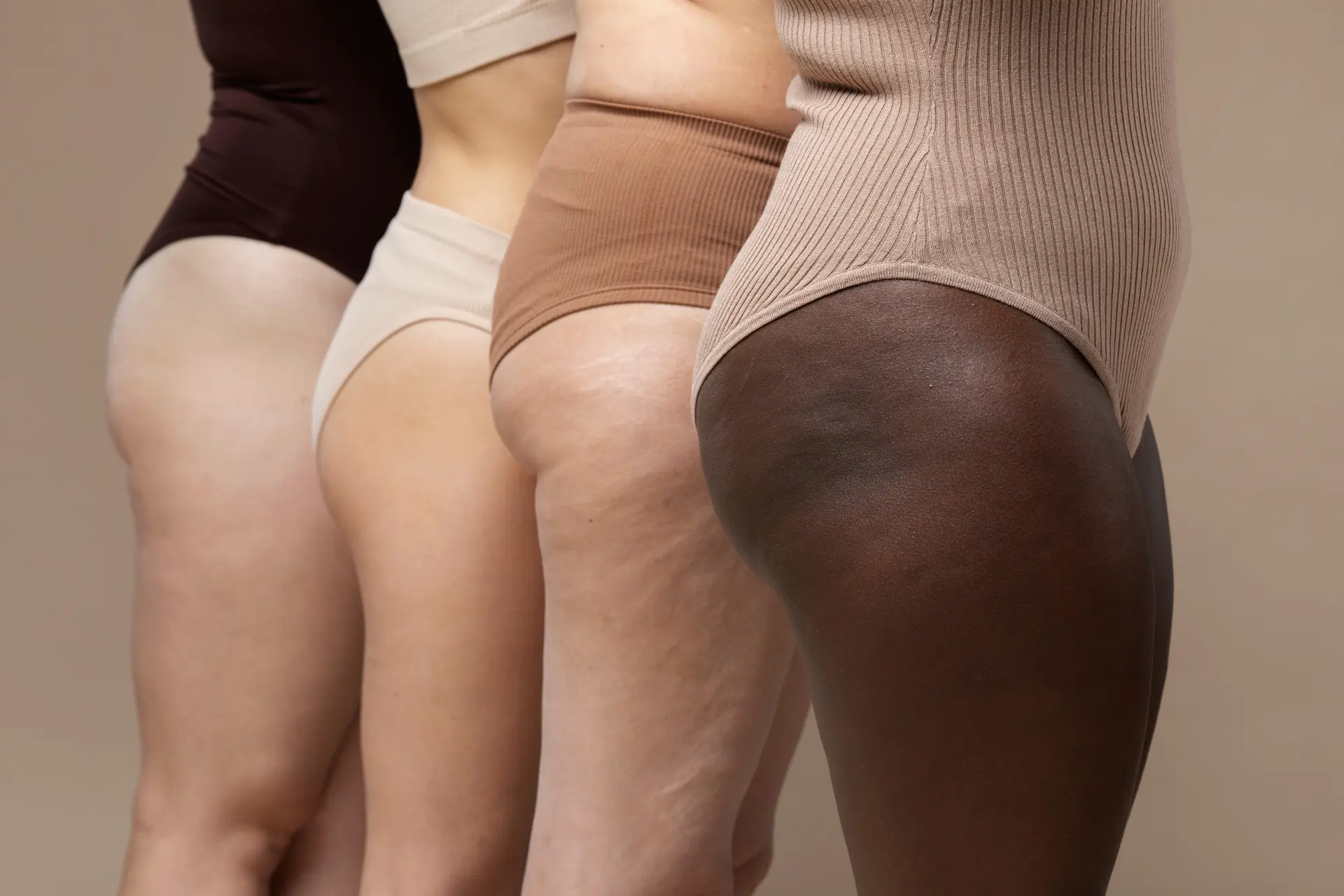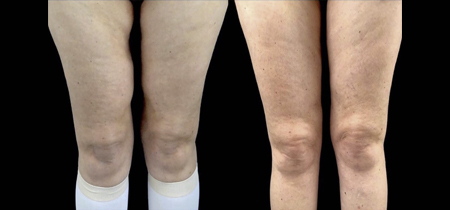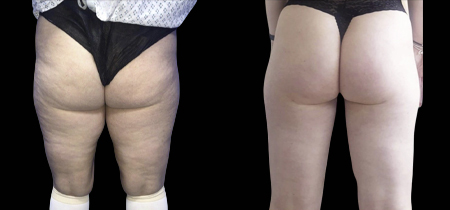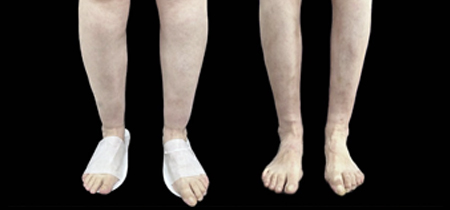Microneedling Recovery & Aftercare with Dr Fasano Congratulations on taking the step toward healthier, rejuvenated skin! Following your microneedling treatment, proper aftercare is essential to...
Understanding Lipoedema in Legs
Lipoedema is a condition that remains largely misunderstood, despite affecting millions of women worldwide. It involves the abnormal build-up of fat beneath the skin, particularly in the lower body. The fat is not typical body fat but a distinct, fibrotic type of fat that behaves differently.
One of the most frustrating aspects of lipoedema is that it is commonly misdiagnosed as obesity or dismissed as lifestyle-related weight gain. Many women spend years dieting and exercising rigorously, only to feel discouraged when their legs do not change shape. This misdiagnosis not only delays treatment but can also leave sufferers feeling unsupported and misunderstood.
When lipoedema develops in the legs, the fat usually appears symmetrically. The thighs, calves, and ankles often become disproportionately larger compared to the torso, giving the legs a heavy, column-like appearance. The feet remain unaffected, which creates a clear “step” between the ankle and calf.
Beyond the physical appearance, the condition causes other symptoms that can interfere with daily life. The affected areas are often painful, tender to the touch, and prone to bruising, even with minimal pressure. Many women describe their legs as feeling heavy or swollen, which limits mobility and makes exercise or prolonged standing uncomfortable. Over time, the progressive nature of lipoedema can make even everyday tasks more challenging.
Hormones appear to play a key role in triggering or worsening the condition. Lipoedema frequently emerges during puberty, pregnancy, or menopause – times when the female body undergoes significant hormonal changes. Genetics also play a strong part, as many women with lipoedema have close relatives who experienced similar symptoms.
Why Lifestyle Changes Don’t Work For Lipoedema In Legs
For many conditions related to weight and fat distribution, diet and exercise are recommended as first-line treatments. Unfortunately, with lipoedema, this advice does not work. Women often report losing weight from their upper body, face, or waist, but their legs remain stubbornly enlarged.
This resistance is due to the unique structure of lipoedema fat. The fat cells are larger, more fibrous, and poorly vascularised compared to normal fat. This means they are less responsive to metabolism and less likely to shrink even during calorie restriction. In addition, the connective tissue around lipoedema fat is abnormal, making the area more prone to fluid retention, pain, and easy bruising.
The emotional impact of this cannot be overstated. Many women feel judged by others who assume their condition is due to overeating or lack of exercise. Constantly battling a condition that does not respond to lifestyle change can lead to anxiety, frustration, and in some cases, depression. The sense of hopelessness can be overwhelming, particularly when healthcare professionals also fail to recognise the condition.
 Treatment Options for Lipoedema in Legs
Treatment Options for Lipoedema in Legs
Conservative Approaches
Although conservative treatments cannot remove lipoedema fat, they do play a role in symptom management. Compression garments, for example, are often recommended to help control swelling and provide support to the legs. These garments improve circulation and make walking less uncomfortable, although they must be worn daily to be effective.
Manual lymphatic drainage (MLD) is another non-surgical option. This gentle form of massage stimulates the lymphatic system, reducing fluid build-up and easing discomfort. While it provides temporary relief, it does not alter the fat distribution itself.
Exercise, particularly low-impact activities like swimming or cycling, can help maintain mobility and improve muscle tone. Physiotherapy may also be helpful in preserving range of motion and reducing stiffness.
Dietary adjustments, such as anti-inflammatory eating plans, may lessen discomfort or secondary swelling, but again, they do not treat the fat deposits.
In summary, conservative options can help manage symptoms and improve quality of life, but they cannot address the root cause of the condition.
Surgical Approaches
Surgery remains the only effective treatment for removing lipoedema fat. Traditional liposuction was once used but carried significant risks. Because the cannulas used were larger and more aggressive, they sometimes damaged lymphatic vessels, leading to complications.
Today, VASER liposuction has become the preferred method. It is far gentler and more precise, making it especially suitable for delicate areas like the legs. By using ultrasound technology, it breaks down fat cells before removal, which minimises trauma to surrounding tissues and reduces recovery time.
 Lipoedema Surgery Explained
Lipoedema Surgery Explained
VASER liposuction is a minimally invasive surgical technique designed specifically to target stubborn fat. For women with lipoedema, it represents a life-changing solution.
The procedure begins with small incisions placed discreetly in the treatment area. Through these incisions, a probe delivers ultrasound energy directly to the fat cells. The energy causes the fat cells to vibrate and break apart, turning them into a liquid form. Once liquefied, the fat is gently suctioned out using fine cannulas.
This process is highly selective, targeting only the diseased fat cells while sparing vital structures such as blood vessels, lymphatic channels, and connective tissue. As a result, it is both safer and more effective than traditional methods.
Surgery typically lasts between one and four hours, depending on how much fat needs to be removed. Anaesthesia can be administered either as twilight sedation or general anaesthesia, ensuring the patient remains comfortable throughout.
Patients usually notice an immediate difference in the size and feel of their legs after surgery. For many, the sensation of heaviness is lifted straight away. Over the following weeks, as swelling reduces, the final results become even more noticeable.
Recovery After Surgery
The recovery journey after lipoedema surgery is relatively smooth. In the first few days, patients may experience bruising, tenderness, and swelling, which is entirely normal. These symptoms gradually settle over one to two weeks.
Compression garments are an essential part of recovery. They provide support, reduce swelling, and encourage the treated areas to heal into their new shape. Patients are usually advised to wear these garments for several weeks following the procedure.
Most individuals return to light daily activities within 7–14 days, although strenuous exercise should be avoided until cleared by the surgeon. Pain is generally described as mild to moderate and is easily controlled with prescribed medication.
Long-term, the outlook is excellent. Because the fat cells removed during VASER liposuction are permanently destroyed, they do not return. This means the results of the surgery are long-lasting, provided a stable weight is maintained.
 Benefits of VASER Lipoedema Surgery
Benefits of VASER Lipoedema Surgery
The benefits of surgery go beyond cosmetic improvements. For many women, the procedure is life-changing. The immediate reduction in leg size brings physical relief, making walking, climbing stairs, and exercising much easier. Pain, tenderness, and frequent bruising are often significantly reduced.
The psychological benefits are just as important. Women who once felt embarrassed about the size of their legs often regain confidence, enjoy wearing clothes they previously avoided, and feel more in proportion with their bodies.
Compared to traditional liposuction, VASER is safer, less traumatic, and requires a shorter recovery time. Its precision ensures smoother contours and a more natural appearance. Most importantly, the results are permanent, offering a long-term solution to a condition that cannot be managed by lifestyle alone.
Who is a Candidate?
Not everyone with larger legs will require surgery, but for women with confirmed lipoedema, surgery is often the only way to achieve real relief. Good candidates are those who experience pain, heaviness, or restricted mobility that has not improved with conservative approaches.
Candidates should be in good general health and understand both the benefits and limitations of the procedure. Surgery will not cure lipoedema entirely, but it will remove the diseased fat, significantly improving quality of life.
Why Choose Dr Fasano?
Dr Fasano is a leading specialist in lipoedema surgery, with particular expertise in the VASER technique. His practice is dedicated to helping women affected by this condition, and his reputation has been built on precision, safety, and compassionate care.
Every patient receives a personalised treatment plan tailored to their unique anatomy and symptoms. From the first consultation through to aftercare, Dr Fasano and his team provide guidance and reassurance at every stage of the journey. With clinics in both London and Birmingham, patients can access expert care conveniently.
Cost of Lipoedema Surgery In Legs
The cost of lipoedema surgery with Dr Fasano begins at £3,763. A face-to-face consultation, priced at £150, is required before surgery. This consultation allows Dr Fasano to assess your condition in detail, discuss your goals, and create a tailored treatment plan.
Although surgery represents an investment, it provides permanent results. By contrast, conservative measures such as compression therapy or massage require ongoing costs without ever
removing the fat. In this way, surgery offers greater long-term value.
 Frequently Asked Questions
Frequently Asked Questions
- Can lipoedema come back after surgery? – No. The fat cells removed are permanently gone. However, maintaining a stable weight will help preserve results.
- Is the procedure painful? – Patients usually describe the discomfort as mild to moderate. Pain relief is provided, and recovery is generally well tolerated.
- How long until I see full results? – An improvement is visible immediately, but swelling can take several weeks to resolve fully. Final results are usually appreciated after two to three months.
- Will I have scars? – The incisions used are very small and placed in discreet areas, leaving only faint, barely visible marks.
- Is surgery suitable for all stages of lipoedema? – Yes. The extent of treatment will vary, but patients at different stages can benefit significantly.
Final Thoughts
Lipoedema in the legs can have a profound impact on both physical and emotional wellbeing. Conservative treatments can help to manage symptoms, but they do not solve the root problem. For long-term relief, VASER liposuction is the most effective and advanced treatment available today.
By removing the diseased fat safely and permanently, surgery restores mobility, relieves discomfort, and improves confidence.
Book a Consultation with Dr Fasano
If you are struggling with the effects of lipoedema in your legs, you do not need to face it alone. Dr Fasano offers expert consultations and treatments at his clinics in London and Birmingham. By booking an appointment, you can gain a clear diagnosis, discuss your options, and take the first step towards lasting relief.
Lipoedema surgery is not just about changing how your legs look – it is about giving you back your mobility, comfort, and quality of life. Arrange your consultation with Dr Fasano today and begin your journey towards recovery.

 Treatment Options for Lipoedema in Legs
Treatment Options for Lipoedema in Legs Lipoedema Surgery Explained
Lipoedema Surgery Explained Benefits of VASER Lipoedema Surgery
Benefits of VASER Lipoedema Surgery Frequently Asked Questions
Frequently Asked Questions

